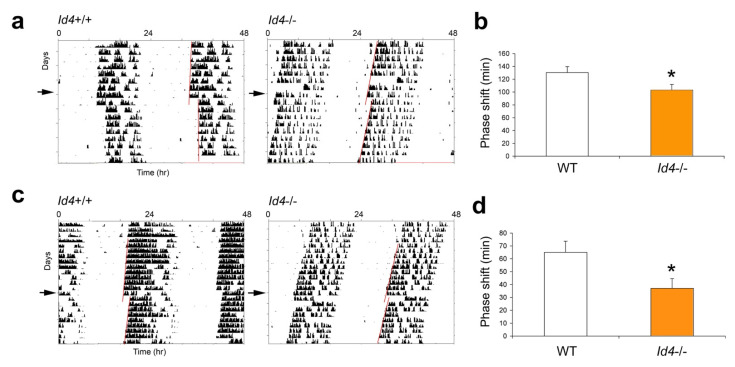Figure 3.
Id4−/− mice treated with a single SATURATING (30 min, 1000 lux) or a SUB-SATURATING (4 min, 8 lux) discrete light pulse at Circadian time 16 (CT16) exhibit a decrease in the magnitude of the phase shift. Wild-type (Id4+/+, WT) and Id4−/− mice (n = 20 and 16, respectively) were maintained in DD, and wheel-running activity was recorded. Mice were exposed to a saturating (a) or sub-saturating light treatment (c). The arrow on the left indicates the actual day of treatment. A line is fitted to the phase of activity onset before and after the light treatment, and the time difference between the two lines is the measured phase delay of the free-running rhythm. Mean ± standard error of the mean (SEM) magnitude of the phase shifts in wild-type (white) and Id4−/− mice (orange) produced by the (b) saturating and (d) sub-saturating light treatment (* p < 0.05).

